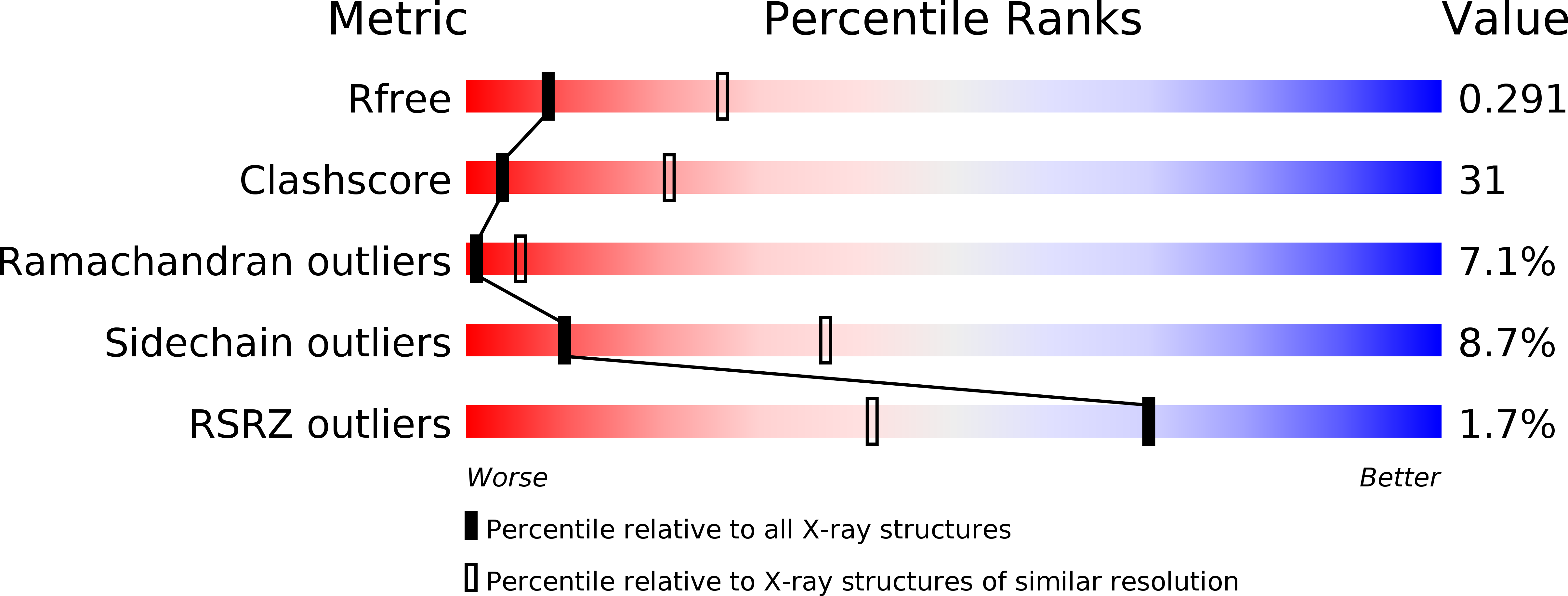
Deposition Date
2011-06-07
Release Date
2012-02-08
Last Version Date
2024-10-09
Entry Detail
PDB ID:
3SCK
Keywords:
Title:
Crystal structure of spike protein receptor-binding domain from a predicted SARS coronavirus civet strain complexed with human-civet chimeric receptor ACE2
Biological Source:
Source Organism:
Paguma larvata (Taxon ID: 9675)
Homo sapiens (Taxon ID: 9606)
SARS coronavirus (Taxon ID: 227859)
Homo sapiens (Taxon ID: 9606)
SARS coronavirus (Taxon ID: 227859)
Host Organism:
Method Details:
Experimental Method:
Resolution:
3.00 Å
R-Value Free:
0.28
R-Value Work:
0.23
R-Value Observed:
0.24
Space Group:
P 1 21 1


